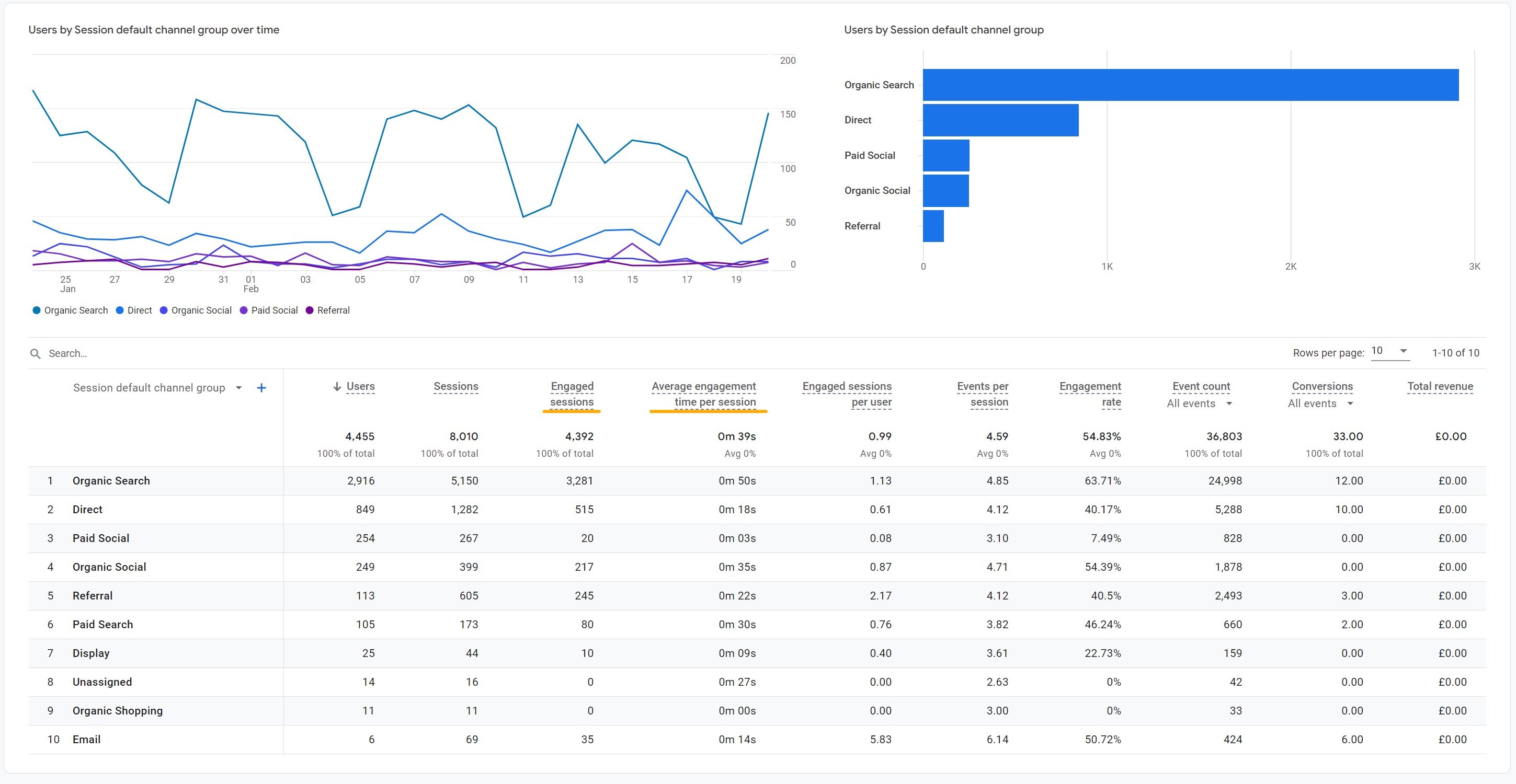Have you noticed some volume disparities when you compare your number of sessions and users between Universal Analytics and Google Analytics 4?
Don’t panic! It is totally expected. When Google upgraded to Google Analytics 4 it reviewed some metric definitions, which in turned changed how some calculations occur.
In this new GA4 tips and tricks edition we’re going to focus on user and session definitions. Hopefully it will help you to get more familiar with these new GA4 definitions and enable you to understand what your data really means.
Let’s dive in!
What is a session in Google Analytics 4?
Sessions in UA and in GA4 are different. In fact, since events have a fundamental role in GA4, there are various subtleties to consider.
GA4 sessions definitions
- A UA session is a group of hits recorded for a user in a given time period (session-based model)
- In GA4 a session is a group of events recorded for a user for a given period of time (event based)
Unlike UA, GA4 counts sessions by counting the session_start event. This event type generates a session ID and analytics associates the session ID with each subsequent event in the session.
You might have also noticed some new engagement sessions metrics in your GA4 reports like:
- Engaged session: The number of sessions that lasted 10 seconds or longer or had 1 or more conversion events or 2 or more page or screen views. (Google’s definitions)
- Average engagement time / session: User engagement duration per session. Please note that an engaged session (by default) is 10 seconds.

These new metrics come in addition to the main session metric and gives us another layer of information on how users are engaging with a website within the same session.
In GA4 you can configure the engagement threshold so if 10 seconds is too long or too short for your business and website behaviour then you have the power to amend it. It’s important that the data tallies with what matters to you.
Conversions & sessions in GA4
I have also recently discovered that the way conversions (set-up as goals in Universal Analytics) are counted is different between UA and GA4.
Despite the fact that the term ‘goals’ disappeared in GA4 and also the set-up process is different for conversions (which replaces it), UA counts only one conversion per session for the same goal vs GA4 which counts multiple conversions per session for the same conversion event.
For example, if you set up a newsletter signup thank you page event (signup_form) as a conversion in GA4. If one user signs up twice within the same session, GA4 will count 2 conversions vs UA which would have only counted one conversion.
Therefore, your number of goals/conversions might vary between UA and GA4.
Active user is the new GA4 primary user metric
One of the main differences between Universal Analytics users and Google Analytics 4 users is the number of different types of users. GA4 has snuck in a new user type – active users.
To recap, UA has two user metrics:
- Total users
- New users
In GA4, we have three user metrics:
- Total users
- New users
- Active users
This new Active User metric includes users with first_visit event (the first time a user visits a website) or users who have an engaged session (based on the new engagement metrics shared above)
“Universal Analytics highlights total users (shown as users) in most reports, whereas GA4 focuses on active users (also shown as users). So, while the term ‘users’ appears the same, the calculation for this metric is different between UA and GA4 since UA is using total users and GA4 is using active users.”

In other words, Google is telling us that the data behind the metric “users” in our new reports has completely changed. Even if the label is the same between the two platforms, the calculation is different.
And this is very important! In fact, Google is now including the engagement of a user in the primary “users” metrics. It looks like Google really wants us to understand that engagement is key in GA4.

If you want to take this topic a step ahead and see how you can use the user-scope and session scope metrics, you should have a look at this blog article where we share some tips for GA4 report usage.
Stay tuned… we’ll be sharing more tips and tricks very soon!




